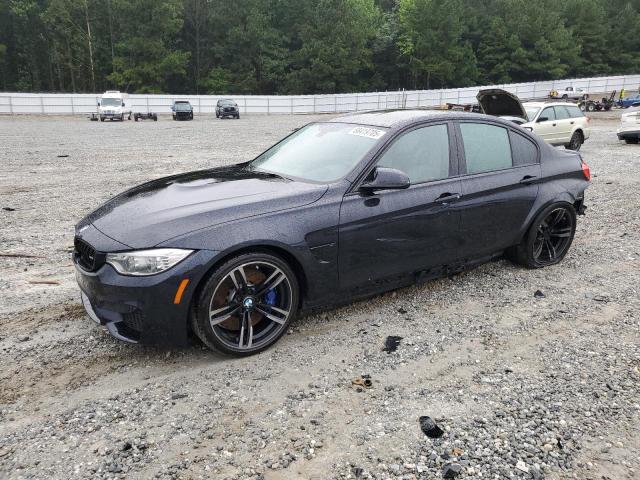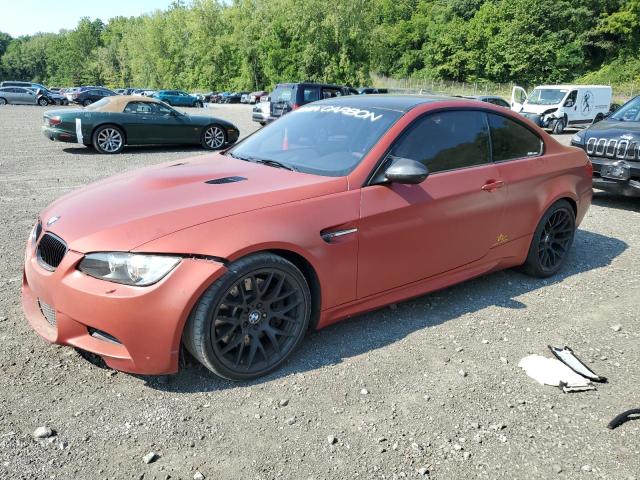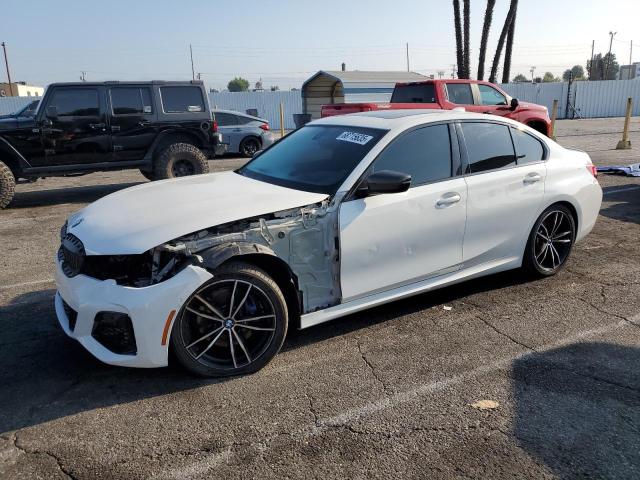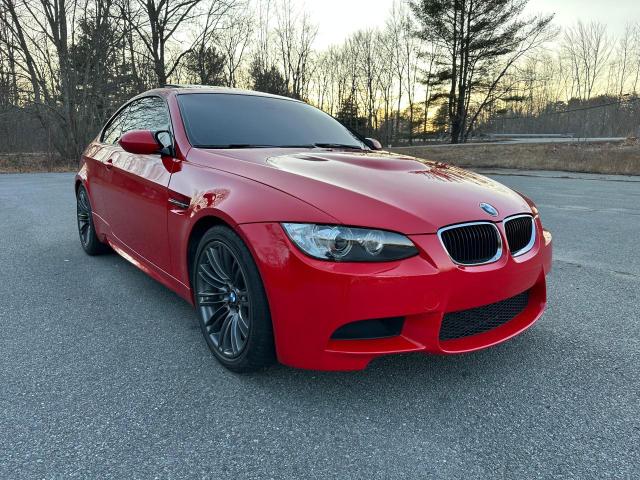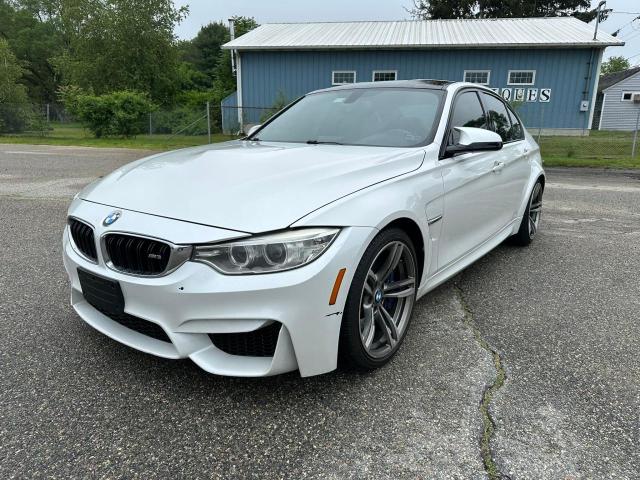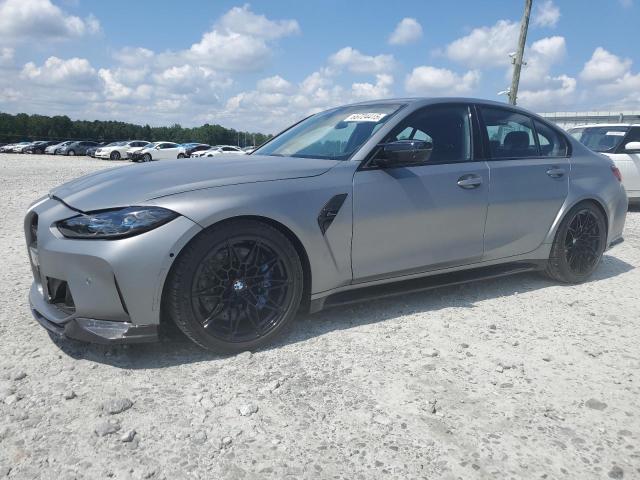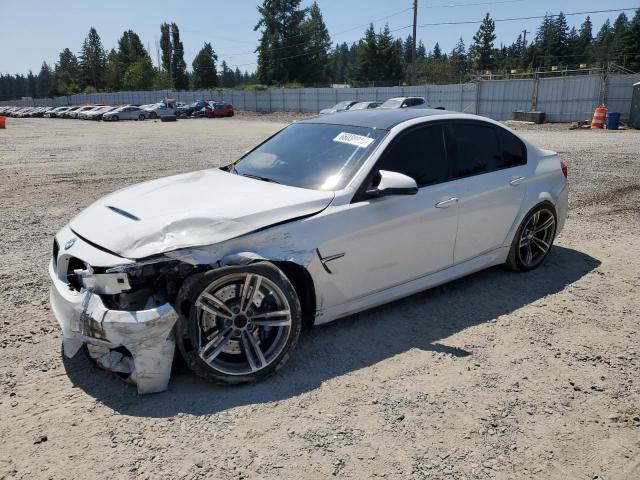2015 BMW M3 | WBS3C9C59FP805777
Lot details
- Sale Date2025-05-27
- Lot Number41732607
- ACV31838 $
- Sale documentSalvage (Minnesota)
- LocationMinneapolis South (MN)
- Odometer118,556 miles (190,797 km)
- Primary DamageFRONT END
- SellerProgressive Casualty Insurance
Vehicle specifications
1
~$98,000
Engine: 3.0L twin-turbocharged inline-6
Torque: 600 Nm
0–100 km/h: ~3.9 s
The F80-generation BMW M3 marked a significant shift in M philosophy. Moving from a high-revving naturally aspirated V8 to a turbocharged inline-6, BMW reignited the essence of M in a new technological era. The chassis was honed with lightweight aluminum components and a wider track than ever before, offering razor-sharp responsiveness. It remained unmistakably M in feel, yet evolved to meet modern expectations of power delivery, efficiency, and tunability. The addition of electronically controlled rear differential and adaptive M suspension sharpened its reflexes both on road and track.
At the top of the range sat the M3 CS, a limited-run evolution of the standard M3 and Competition Package. It delivered 460 hp and a more aggressive throttle response thanks to a recalibrated ECU and reduced weight. Unique forged wheels, carbon fiber enhancements, and a retuned M adaptive suspension gave it both visual edge and a dynamically sharpened footprint. Its 0–100 km/h sprint of 3.9 seconds put it firmly in super-sedan territory, and the CS badge brought a level of exclusivity that made it an instant modern classic.
What truly defines the F80 M3’s sportiness is how it bridged eras. It offered four-door practicality without compromising on visceral thrills. Whether through the raw mechanical grip, the crackle of its exhaust in Sport+ mode, or the way it dived into corners with confidence, the M3 proved that precision and aggression could coexist with everyday usability. It wasn’t just fast—it was focused, connected, and relentlessly engaging.
Final Bid BMW M3 (2015)
$10,000
$16,433
$22,700
Body Styles
Four-door performance sedan with aggressive proportions, widened fenders, functional aero components, and carbon-fiber roof. Based on the F30 3 Series platform but extensively modified by BMW M GmbH.
Model Name Meaning (Manufacturer)
“M3” denotes the Motorsport division of BMW applied to the 3 Series — traditionally the most iconic and enthusiast-focused of all M models. The F80 generation was the first M3 to switch from a naturally aspirated V8 (E90) to a twin-turbocharged inline-6, marking a turning point in M powertrain philosophy. The “S55” engine introduced water-to-air intercooling, closed-deck block, and track-grade cooling systems — a major evolution from the N55. The addition of the Competition Package and CS variant brought sharper handling and higher output, pushing the model closer to track-ready territory.
Model Name Meaning (Languages)
“M3” is universally recognized by enthusiasts as BMW’s high-performance compact sedan. The “M” prefix (Motorsport) transcends language, carrying the same prestige in North America, Europe, and Asia. “CS” stands for Club Sport, a lightweight, limited-edition performance designation historically used in M GmbH models to denote sharper chassis tuning and exclusivity — often reserved for purist drivers.
Body & Interior Colors and Rims
The BMW M3 F80 marked a major evolution in the M3 lineage, being the first to adopt turbocharging — powered by the S55 3.0-liter twin-turbo inline-six — and to split the model line into sedan-only for the M3, with the coupé and convertible renamed M4. The F80 generation combined aggressive styling with daily usability, and its color palette, interior themes, and wheel designs reflected both traditional M refinement and motorsport-inspired boldness.
The exterior color options included both classic BMW finishes and unique M-exclusive shades. Core colors such as Alpine White, Black Sapphire, and Mineral Grey provided a clean, understated appearance. More vibrant and performance-oriented choices like Yas Marina Blue, Austin Yellow, Sakhir Orange, and Silverstone Metallic became signature hues of the F80 era. Later years introduced San Marino Blue, Tanzanite Blue II, and Champagne Quartz through BMW Individual, along with rare satin Frozen finishes like Frozen Black, Frozen White, and Frozen Brilliant White, giving owners a chance to truly personalize the car’s aggressive, flared-fender bodywork.
Inside, the F80 M3 featured a driver-focused cockpit with M-specific trim, blending performance materials with luxury. Standard interior options included Black, Sakhir Orange, Sonoma Beige, and Silverstone Merino leather. Optional extended or full Merino leather packages added premium stitching and soft-touch materials across the dash and doors. The Competition Package brought subtle updates, including lightweight M sport seats with enhanced bolstering and perforated center panels, often trimmed in Alcantara with contrast stitching. Aluminum Blade, Carbon Fiber, and Fineline Anthracite wood were among the available interior trims, letting drivers tailor the ambiance from track-ready to executive-sport.
Wheel options helped differentiate trims and packages. Early F80 models came with 18-inch double-spoke wheels in Ferric Grey, while optional 19-inch styles added a more aggressive look. The Competition Package introduced exclusive 20-inch Style 666M wheels, finished in Orbit Grey or black — now iconic for their lightweight, Y-spoke design. Other notable wheels included the 437M (double-spoke, bi-color) and 513M (star-spoke, forged, with a motorsport feel), especially for ZCP and track-focused variants. Behind the wheels, blue or optional gold brake calipers and large drilled rotors highlighted the car’s M performance credentials.
Top Expensive Options
- M Carbon Ceramic Brake System: ~$8,150
- Competition Package (power bump, suspension, exhaust): ~$5,500
- M DCT Transmission (instead of 6MT): ~$2,900
- Executive Package (HUD, 360 camera, heated rear seats): ~$3,900
- Adaptive LED Headlights with High-Beam Assistant: ~$800
- BMW Individual Paint (Frozen Grey, Grigio Telesto): ~$5,000
- Harman Kardon Surround Sound System: ~$875
- Carbon Fiber Interior Trim + Alcantara Pack (CS only): included
- M Performance Exhaust with Carbon Tips (dealer option): ~$3,000
- Lightweight CS Hood and Rear Diffuser (carbon fiber): included
vs Competitors
The F80 M3 competed directly with the Mercedes-AMG C63, Audi RS4/RS5, Cadillac ATS-V, and Alfa Romeo Giulia Quadrifoglio. It was lauded for its sharp steering, track-ready cooling, and brutally efficient power delivery. Though some critics lamented the lack of emotion compared to the E92 V8, the S55 was quicker, more tunable, and better-balanced. Against the C63’s thunderous V8 or Giulia’s raw edge, the M3 held its own with clinical precision and modular performance variants (Base → Competition → CS). It remained one of the most engaging sedans to drive — and one of the most moddable.
Fun Fact
The F80 M3 was the first and only M3 sedan to feature a turbocharged inline-6, as its successor (G80) introduced AWD (xDrive) and split the sedan/coupe into distinct M3/M4 branding. The M3 CS used a special variant of the S55 engine, with unique tuning, lightweight body panels, and no manual option — making it a track-weaponized M3 that previewed elements of the GTS philosophy. The F80 platform also became a favorite for tuners worldwide, often pushing past 600 hp with simple ECU and downpipe upgrades.


